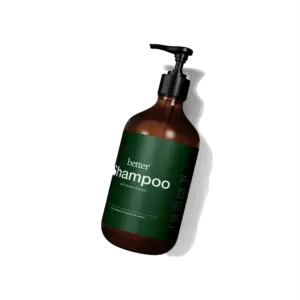Minoxidil Side effects
Posted Date:
November 21, 2024
Modified Date:
November 21, 2024

Minoxidil is a popular over-the-counter medication used to treat hair loss and promote hair regrowth. While it is effective for many users, it’s important to be aware of the potential side effects. In this post, we’ll explore the common and less common side effects of Minoxidil, and what you can do if you experience them.
Understanding Minoxidil
Minoxidil works by widening blood vessels in the scalp, which improves blood flow to hair follicles and extends the anagen (growth) phase of the hair cycle. This helps to stimulate hair growth and slow balding. However, like any medication, Minoxidil can cause side effects in some users.
Common Side Effects
The most common side effects of Minoxidil are typically mild and may subside as your body adjusts to the medication. These include:
-
Scalp Irritation
-
Minoxidil can cause dryness, redness, and itching on the scalp. This is more common with the solution form, which contains propylene glycol, an ingredient that can be irritating to some users.
-
-
Unwanted Facial Hair
-
Some users may notice hair growth on the face, particularly on the forehead and cheeks. This can happen if the medication drips down from the scalp or if you touch your face with Minoxidil on your hands.
-
-
Initial Shedding
-
In the first few weeks of using Minoxidil, you may experience increased hair shedding. This is a normal part of the process as weaker hairs fall out to make way for new growth.
-
Less Common Side Effects
While less common, some users may experience more serious side effects. If you notice any of these, it’s important to seek medical advice:
-
Allergic Reactions
-
Symptoms of an allergic reaction include rash, hives, difficulty breathing, and swelling of the face, lips, or tongue. Discontinue use and consult a healthcare professional if you experience these symptoms.
-
-
Dizziness or Lightheadedness
-
Some users may feel dizzy or lightheaded after applying Minoxidil. This could be a sign of low blood pressure, a rare side effect of Minoxidil.
-
-
Rapid Heartbeat
-
A rapid or irregular heartbeat can occur in rare cases. If you experience this, stop using Minoxidil and seek medical attention immediately.
-
-
Swelling of Hands or Feet
-
Swelling or edema in the hands or feet can be a sign of a more serious reaction. Contact your doctor if you notice significant swelling.
-
Managing Minoxidil Side Effects
If you experience side effects while using Minoxidil, there are steps you can take to manage them:
-
Switch Formulations: If you’re experiencing irritation with the solution, consider switching to Minoxidil foam, which is less likely to cause scalp irritation.
-
Adjust Application: Make sure you’re applying the correct amount of Minoxidil and avoid getting it on other parts of your body to reduce the risk of unwanted hair growth.
-
Maintain Scalp Health: Use gentle, hydrating shampoos and conditioners to soothe and protect your scalp. Avoid harsh hair treatments that can exacerbate irritation.
-
Consult a Professional: If side effects persist or are severe, consult with a healthcare professional or dermatologist. They can provide guidance and recommend alternative treatments if necessary.
While Minoxidil is effective for many users, it’s important to be aware of the potential side effects. By monitoring your reaction to the medication and taking steps to manage any side effects, you can use Minoxidil safely and effectively to combat hair loss and promote hair regrowth.




